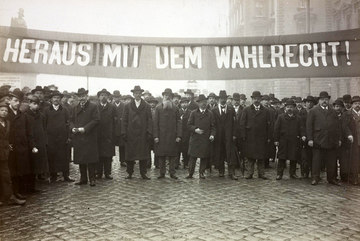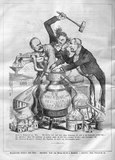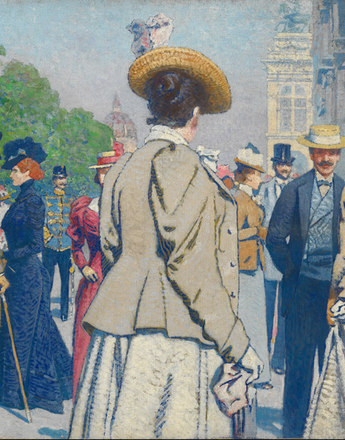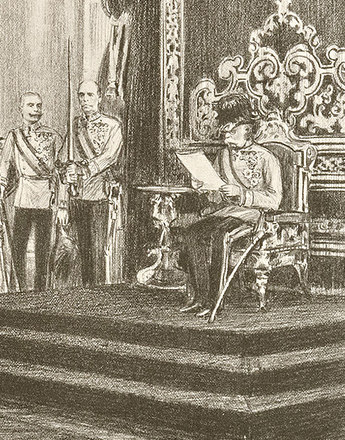The constitution adopted in December 1867 was the first constitution of the monarchy that was not imposed by the Emperor but adopted by the Reichsrat. It can be seen as the birth of Austrian parliamentarianism, which from then on would continue to develop without interruption.
The December Constitution was not a single constitutional document but rather a number of individual laws. They contained a list of the citizens' basic rights, regulated the legislature, laid down the independence of the judges, extended parliament's right of control and established an Imperial Court as the precursor of today's Constitutional Court. The 1861 February Patent was modified and included in the constitution, and for this reason both census and curial suffrage continued to apply. However, the right to issue emergency regulations enabling the government to rule without the Reischsrat meant that Parliament was not a genuine counterweight to the Emperor. "Austrian parliamentarianism", according to Rainer Nick and Anton Pelinka, "remained a constitutional institution of the second order" – and thus differed in essence from parliamentarianism in a parliamentary constitutional monarchy, where the monarch's power was more or less restricted by the constitution.
1873 saw the first modification of the franchise for the Reichsrat, which was now to be elected directly and was no longer made up of members of the provincial diets. However, the reforms made no changes to the census system, and for this reason still only roughly 6% of the population was able to participate in political life.
The electoral reform of 1882 and the reduction of the required tax payment, the census, to 5 Guilders was the next step towards the broadening of the electorate. The "five-Guilder men" whom this enfranchised came primarily from the lower middle classes.
In 1896, the four existing curiae were joined by a fifth (the "general electoral class") that gave the vote to every male citizen over 24. While this increased the size of the electorate from 1.7 million to 5.3 million, the votes still remained unevenly distributed. While the first four curiae contributed 353 of a total of 425 members, the fifth curia elected only 72 members, each representing 70,000 voters. In contrast, a member elected by the first and second curiae represented 64 and 26 electors respectively.
For this reason, the newly formed large parties, above all the Social Democrats, demanded a further electoral reform and the introduction of universal, direct, equal and secret elections. The desire for political participation amongst the workers was expressed particularly in the numerous May Day marches and mass demonstrations organised by the labour movement. Alongside the Social Democrats, the Christian Socials and other non-German parties supported a broadening of the suffrage. Finally, on 26 January 1907, universal, equal, direct and secret suffrage for all male citizens above 24 was adopted. The elections to the Reichsrat in the same year brought considerable successes for the two mass parties, the Christian Socials and the Social Democrats.
Translation: David Wright
Hanisch, Ernst/Urbanitsch, Peter: Grundlagen und Anfänge des Vereinswesens, der Parteien und Verbände in der Habsburgermonarchie, in: Rumpler, Helmut/Urbanitsch, Peter (Hrsg.): Die Habsburgermonarchie 1848-1918. Bd. VIII. Politische Öffentlichkeit und Zivilgesellschaft. 1. Teilband. Vereine, Parteien und Interessenverbände als Träger der politischen Partizipation, Wien 2006, 15-111
Nick, Rainer/Pelinka, Anton: Parlamentarismus in Österreich, Wien/München 1984
Rumpler, Helmut: Österreichische Geschichte 1804-1914. Eine Chance für Mitteleuropa. Bürgerliche Emanzipation und Staatsverfall in der Habsburgermonarchie, Wien 1997
Urbanitsch, Peter: Die Nationalisierung der Massen, in: Das Zeitalter Kaiser Franz Josephs. 2. Teil 1880-1916. Glanz und Elend (Ausstellungskatalog der Niederösterreichischen Landesausstellung im Schloss Grafenegg), Wien 1987, 119-125
Vocelka, Karl: Geschichte Österreichs. Kultur – Gesellschaft – Politik, 3. Auflage, Graz/Wien/Köln 2002
Quotes:
"Austrian parliamentarianism ...": Nick, Rainer/Pelinka, Anton: Parlamentarismus in Österreich, Wien/München 1984, 33-34 (Translation)
-
Chapters
- Preconditions and beginnings of political participation
- On the road to political participation
- Liberalism and conservatism
- The rise and fall of liberalism
- Workers unite!
- Party of the masses
- Between a truce policy and left-wing radicalism
- Karl Lueger and the "Sausage Pot Party"
- "The Colossus of Vienna"
- Rise and fall
- Commitment to the Monarchy
- "Greater German", "Smaller German" or "German National"?
- "German and loyal, outright and true"
- "Prussian plestilence" or Habsburgophilia
- The battle for the 'national electorate'





